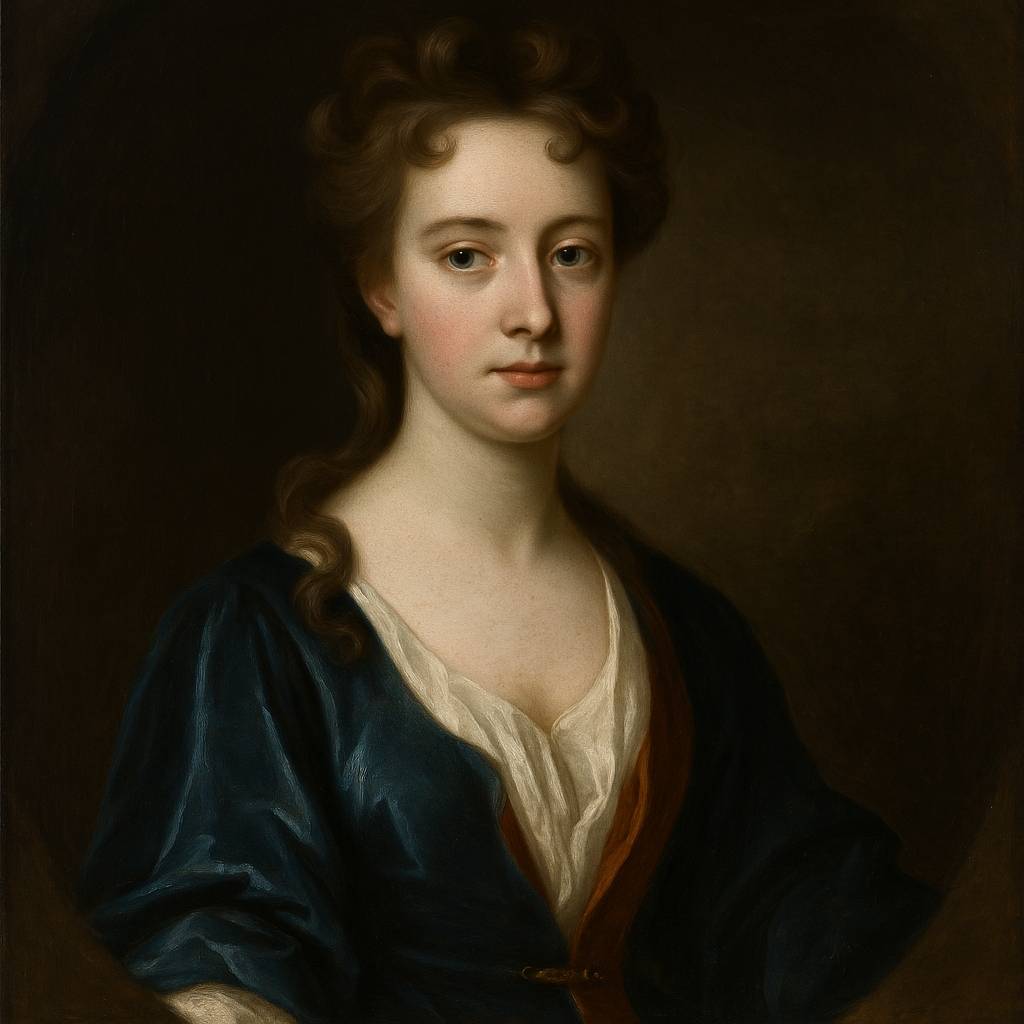1 Poems by Mary Monck
1677 - 1715
Mary Monck Biography
Mary Monck, an often overlooked yet significant figure in 17th century English poetry, led a life as intricate and nuanced as her verse. Born in 1677 to Elizabeth Molesworth and Robert Molesworth, 1st Viscount Molesworth, Mary was raised in an environment steeped in political and literary discourse. Her father, a prominent Whig politician and writer, undoubtedly influenced her intellectual development and passion for the written word.
Despite the limitations placed on women's education during this period, Mary received a comprehensive and liberal education, unusual for a woman of her time. This privileged upbringing nurtured her poetic talents and provided her with a broad base of knowledge that would later manifest in her diverse poetic themes and allusions.
In 1697, at the age of twenty, Mary married George Monck of St. Stephen's Green, Dublin. Their union was brief but impactful; George died just three years later in 1700, leaving Mary a young widow. This personal tragedy would become a defining moment in her life and work, inspiring some of her most poignant and emotionally charged poetry.
Mary's poetic output, though limited in quantity, is remarkable for its quality and depth. Her work is characterized by its emotional intensity, intellectual rigor, and technical sophistication. She expertly employed various poetic forms, including the sonnet and the elegy, demonstrating a mastery of meter and rhyme that rivaled her male contemporaries.
One of her most celebrated works, "Verses Wrote on her Death-Bed at Bath, to her Husband in London," showcases her ability to blend personal experience with universal themes. This heart-wrenching poem, written as she faced her own mortality, explores love, loss, and the transience of life with a raw honesty that continues to resonate with readers centuries later.
Mary's poetry often grappled with themes of grief, love, and spirituality. Her experience as a young widow imbued her work with a profound understanding of loss, evident in poems such as "On the Death of my Dear Husband." Yet, her poetry was not confined to personal sorrow; she also wrote on philosophical and religious subjects, demonstrating a keen intellect and a deep engagement with the theological debates of her time.
Despite her talent, Mary Monck's work remained largely unpublished during her lifetime, a fate shared by many female poets of her era. It wasn't until after her death in 1715 that her brother, John Molesworth, collected and published her poems in a volume titled "Marinda. Poems and Translations upon Several Occasions" (1716). This posthumous publication brought her work to a wider audience and secured her place in the canon of 17th century English poetry.
The publication of "Marinda" revealed the breadth of Mary's poetic talents. In addition to her original compositions, the volume included several translations from classical and contemporary sources, showcasing her linguistic skills and her engagement with the broader European literary tradition. Her translations of Ovid and Tasso demonstrate not only her command of Latin and Italian but also her ability to render complex poetic forms and ideas into elegant English verse.
Mary Monck's work is notable for its fusion of the personal and the universal. While many of her poems draw on her own experiences of love and loss, she consistently elevates these personal reflections to explore broader philosophical and existential questions. This ability to transmute individual experience into universal truth is a hallmark of great poetry, and it places Mary Monck firmly in the company of the finest poets of her age.
Scholars of 17th century literature have increasingly recognized the importance of Mary Monck's contribution to the poetic landscape of her time. Her work provides a valuable female perspective on the literary and cultural milieu of late Stuart England, offering insights into the intellectual life of women in this period. Moreover, her poetry serves as a bridge between the metaphysical tradition of the early 17th century and the more restrained, classical style that would come to dominate in the 18th century.
The rediscovery and reevaluation of Mary Monck's work in recent decades have led to a greater appreciation of her poetic craftsmanship and thematic depth. Her skillful use of metaphor, her precise and evocative imagery, and her ability to convey complex emotions with clarity and power have earned her comparisons to more famous contemporaries such as Anne Finch and Aphra Behn.
Despite the relatively small body of work she left behind, Mary Monck's poetry continues to reward close study and analysis. Her unique voice, combining intellectual rigor with emotional authenticity, offers modern readers a window into the inner life of a remarkable woman who lived and wrote at a pivotal moment in English literary history.
In conclusion, Mary Monck emerges as a poet of considerable talent and significance, whose work deserves greater recognition and study. Her life and poetry offer a compelling narrative of personal struggle, intellectual curiosity, and artistic achievement. As scholars continue to excavate and reexamine the literary contributions of women in the early modern period, Mary Monck's star will undoubtedly continue to rise, cementing her place as an important figure in the rich tapestry of English poetry.
This text was generated by AI and is for reference only. Learn more
Username Information
No username is open
Everything is free to use, but donations are always appreciated.
Quick Links
© 2024-2025 R.I.Chalmers (V2Melody).

All music on this site by R.I.Chalmers (V2Melody) is licensed under a Creative Commons Attribution-NonCommercial 4.0 International License.
Attribution Requirement:
When using this music, you must give appropriate credit by including the following statement (or equivalent) wherever the music is used or credited:
"Music by R.I.Chalmers (V2Melody) – https://v2melody.com"
Support My Work:
If you enjoy this music and would like to support future creations, your thanks are always welcome but never required.
Thanks!


